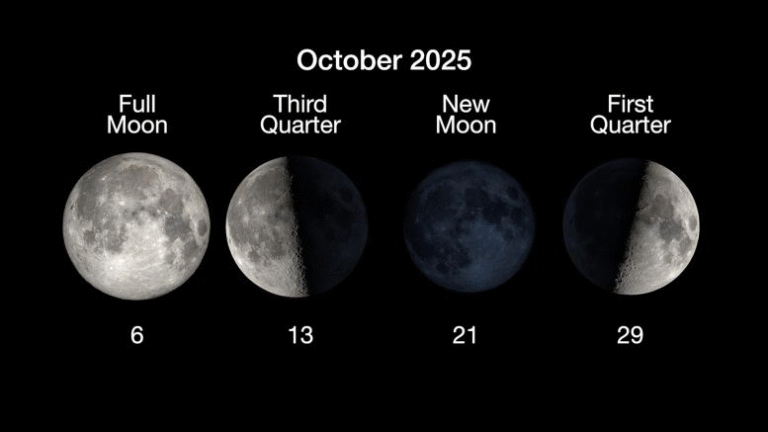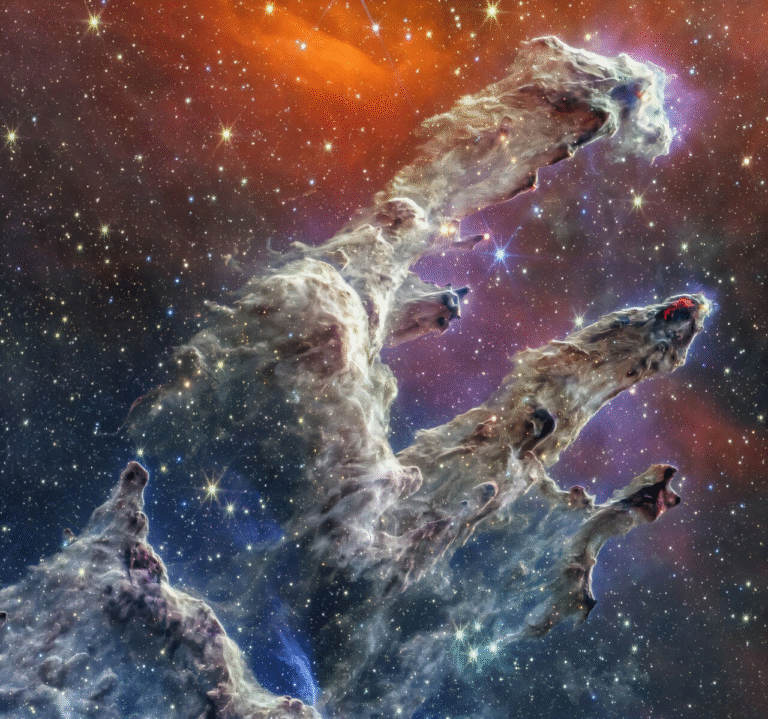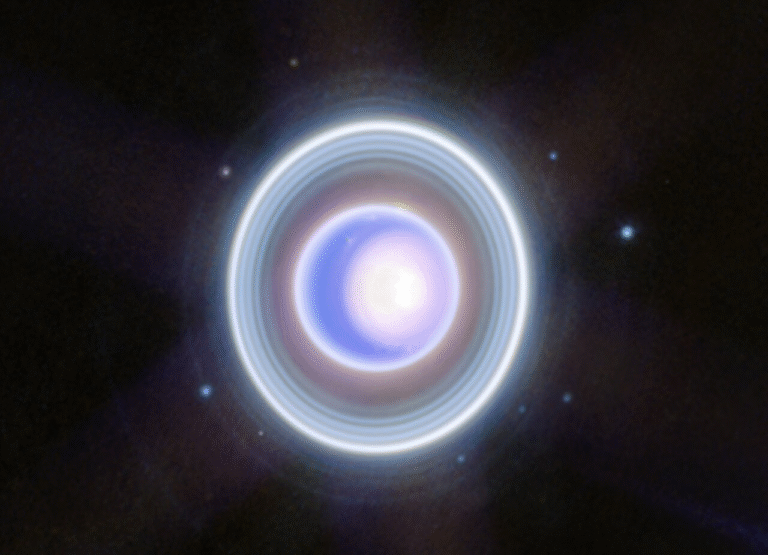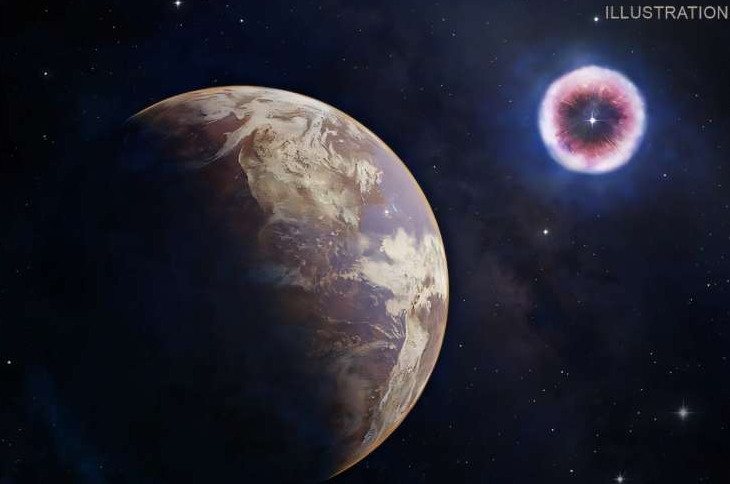Astronomers Detect the Smallest Known Dark Object in the Universe – A Million-Solar-Mass Mystery Revealed

Astronomers have just uncovered one of the smallest and most mysterious invisible objects ever detected in the cosmos — a dark mass roughly one million times heavier than our Sun, yet completely unseen in any light. Detected through the subtle warping of light known as gravitational lensing, this finding could mark a turning point in our understanding of dark matter and the hidden structure of the universe.
The discovery, made by an international collaboration of scientists using a network of radio telescopes across the globe, represents the lowest-mass dark object ever found at a cosmological distance. It’s about 100 times smaller than any other such object previously identified through gravitational lensing, and it might be a dense clump of dark matter or a tiny, inactive galaxy.
The work is detailed in two major papers published in Nature Astronomy and Monthly Notices of the Royal Astronomical Society on October 9, 2025.
The Discovery: A Tiny Distortion Reveals a Giant Mystery
Unlike stars or galaxies that shine in visible or infrared light, this object emits no detectable radiation. Its existence was inferred only through its gravitational effect on light passing nearby. When astronomers looked at a distant galaxy whose light was already being bent by a larger gravitational lens, they noticed something peculiar — a tiny pinch or distortion in the otherwise smooth arc of light.
That subtle imperfection hinted at the presence of a small, unseen mass somewhere in the foreground. Using extremely high-resolution data, researchers modeled this distortion and concluded that it was caused by a compact object weighing around 1.13 million solar masses.
To put that into perspective, this invisible mass is a million times the mass of the Sun, yet minuscule compared to a typical galaxy, which can contain billions or even trillions of solar masses. It’s so compact and so faint that without its gravitational tug on light, we would never know it exists.
The research team used some of the most powerful radio telescopes on Earth to detect this signal, including:
- The Robert C. Byrd Green Bank Telescope (GBT) in West Virginia
- The Very Long Baseline Array (VLBA), stretching from Hawaii to the Caribbean
- The European VLBI Network (EVN), a collection of radio dishes across Europe, Asia, South Africa, and Puerto Rico
Together, these instruments formed a virtual Earth-sized telescope, capable of resolving incredibly fine details in distant radio signals. This technique, known as Very Long Baseline Interferometry (VLBI), gives astronomers the ability to “see” details smaller than a milliarcsecond — equivalent to distinguishing a coin on the Moon.
The Smallest Dark Object Ever Found
This object is not just another galaxy or black hole. It’s something entirely different — a dark, compact mass that could be either:
- A dense knot of dark matter, roughly 100 times smaller than any such clump ever observed.
- A tiny, starless dwarf galaxy, so dim that even the most powerful telescopes can’t see it directly.
The researchers measured the object’s mass within a projected radius of about 80 parsecs (roughly 260 light-years). The data’s precision was remarkable — a 26-sigma detection with just 3% uncertainty in the mass estimate.
For context, that level of statistical confidence makes it one of the most robust detections of a low-mass gravitational lens ever achieved.
What’s more, the object lies at a redshift of 0.881, meaning the light that revealed it began its journey when the universe was about half its current age.
Why This Matters for Dark Matter Theory
Dark matter makes up about 27% of the total mass and energy in the universe, but we have never directly observed it. It doesn’t emit, absorb, or reflect light — it only reveals itself through gravity. One of the major challenges in astrophysics is determining how dark matter is distributed on small scales.
The cold dark matter (CDM) model — the most widely accepted theory — predicts that dark matter should form countless small, dense clumps, some as small as star clusters and many too dim to form stars. Detecting these “invisible knots” is crucial to confirming or refuting that model.
Until now, astronomers could only detect dark matter clumps a hundred times more massive than this one. The fact that a one-million-solar-mass object has been found exactly where CDM theory predicts it should exist is an enormous validation of the model.
If future observations reveal many more such objects, it would strongly support the idea that dark matter forms hierarchically — from small clumps merging into larger halos, eventually creating galaxies.
On the other hand, if such tiny clumps turn out to be rare, it could mean that alternative models, such as warm dark matter or self-interacting dark matter, might better explain how structure forms in the cosmos.
How Gravitational Lensing Helped Find It
Gravitational lensing is one of the most powerful tools for detecting invisible matter in the universe. When light from a distant galaxy or quasar passes near a massive object — like another galaxy — gravity bends and magnifies that light, often creating arcs, rings, or multiple images.
But if there’s an additional small mass in front of that light, it causes tiny distortions or “wiggles” in the lensed image. By carefully modeling these distortions, astronomers can measure the mass and position of the hidden object.
In this case, the newly discovered object appeared as a minor imperfection in an already lensed arc — a nearly invisible pinch that could only be detected thanks to the extreme sensitivity of the radio data.
This discovery proves that astronomers can now use gravitational lensing to detect million-solar-mass dark objects across cosmic distances. It opens the door to mapping out much smaller and fainter structures than ever before.
Building an Earth-Sized Telescope
The success of this detection relied on combining data from radio telescopes spread across continents — effectively turning the entire Earth into one giant antenna.
The Green Bank Telescope provided high-sensitivity data, while the VLBA and EVN offered precision positioning and resolution. By synchronizing signals from all these instruments, astronomers created an Earth-sized super-telescope capable of detecting the minute distortions caused by such a tiny gravitational lens.
This technique of global collaboration shows what’s possible when multiple observatories pool their resources. The same approach has been used to produce groundbreaking images — such as the first picture of a black hole’s shadow — and now it’s being used to uncover objects that are too small, cold, and dark to see in any other way.
Could It Be a Tiny Galaxy Instead?
While it’s tempting to assume this object is a pure dark matter clump, astronomers are cautious. Another plausible explanation is that it could be a faint, compact dwarf galaxy — a collection of stars too dim to be detected at this distance.
Dwarf galaxies are common throughout the universe and are thought to be the building blocks of larger galaxies. Many of them contain very few stars and are dominated by dark matter. If this object turns out to be one of those, it would still tell us a lot about how galaxies form and evolve at small scales.
However, since no light has been detected from this mass so far, the dark matter clump explanation remains strong.
A Step Forward for Cosmic Cartography
Detecting such a small, dark mass so far away is a huge step toward what scientists call “cosmic cartography” — mapping out the invisible scaffolding of the universe.
The researchers emphasize that this is just the beginning. If they can find one such low-mass dark object using current instruments, then many more are likely waiting to be discovered. Future surveys using upgraded or next-generation radio telescopes could reveal a vast population of similar dark masses scattered throughout space.
Each new detection will help refine our understanding of how galaxies assemble, how dark matter clusters, and ultimately, what dark matter really is.
The Broader Importance of Dark Matter Research
Even though dark matter makes up most of the matter in the universe, we still don’t know what it’s made of. It could be composed of undiscovered particles, massive compact halo objects (MACHOs), or something entirely new.
Studying dark matter through gravitational lensing is one of the few ways to gather direct evidence about its behavior, without needing to detect it via light or particle collisions.
Every time scientists find a small, invisible clump like this one, they are effectively testing the laws of physics at cosmic scales. If future data ever show that the number or distribution of such dark objects doesn’t match the predictions of the cold dark matter model, it could mean that our entire understanding of the universe’s structure formation needs revision.
This discovery, therefore, isn’t just another cosmic curiosity — it’s a crucial proof of concept showing that we now have the technology and methods to see the unseen.
What Comes Next
The research team is continuing to analyze more data from other lensed systems to look for additional dark objects of similar mass. Their goal is to determine whether the number of these low-mass clumps matches theoretical predictions.
They’re also refining their models to better understand whether the newly found object is truly a dark matter concentration or a dormant galaxy. Future instruments, such as the Square Kilometre Array (SKA), will vastly increase the sensitivity and resolution of such observations, allowing astronomers to find hundreds or even thousands of these faint distortions.
The more we find, the clearer the picture will become — not only of how dark matter is distributed, but also of how the cosmic web itself is built.
Reference
Research Paper:
“A million-solar-mass object detected at a cosmological distance using gravitational imaging” – Nature Astronomy (2025)





